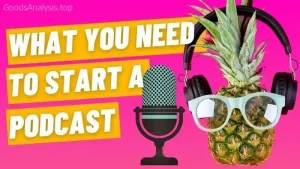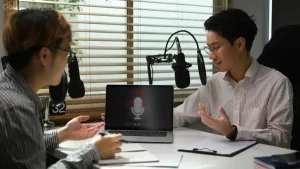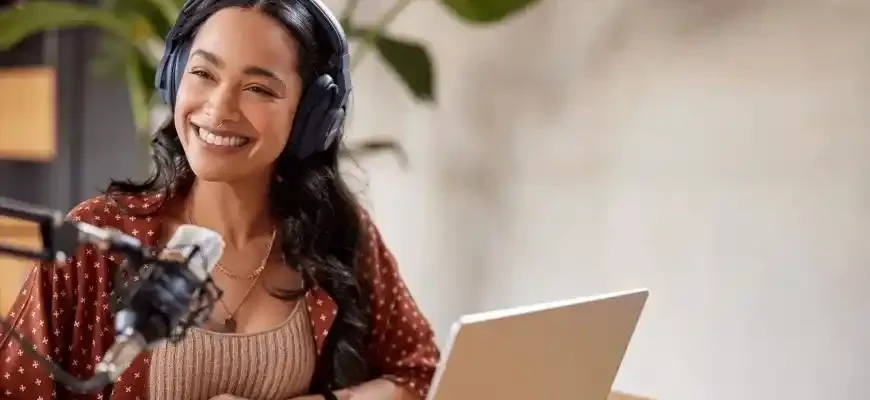Starting a podcast can feel like an intimidating endeavor. You might be thinking, “Where do I even begin? What equipment do I need? How do I get listeners?” Well, fear not. As someone who’s been around the block and seen the rise of podcasts from their humble beginnings to the massive industry they are today, let me walk you through the steps. We’ll talk about the practical aspects, the mistakes you should avoid, and how you can turn your podcast dream into a reality—all without skipping the gritty details.
Step 1: Understand What a Podcast Is—and What It Isn’t
At its core, a podcast is a digital audio (or sometimes video) program made available for download or streaming, typically in episodic form. Think of it as a modern-day radio show, but on demand, and without the need for a major network to get your voice out there. Podcasts can cover almost any topic, from true crime to self-help to interviews with interesting people.
The beauty of podcasts is that they allow anyone to share their voice with the world. And, in 2024, podcasting isn’t just for the pros—it’s for anyone with a smartphone, a good idea, and a willingness to put in some work.
Step 2: Know Your Why
Before you dive into the technical side of things, you need to think about the most important thing: your purpose. Why do you want to start a podcast? Is it to share knowledge, build a community, entertain, or just to have fun?
The more passionate you are about your topic, the more your audience will feel it. According to a 2022 study by Edison Research, 51% of Americans over the age of 12 have listened to a podcast at least once. But—here’s the kicker—content is king. The most successful podcasts are those that offer something unique, whether it’s in-depth discussions, humorous takes, or niche content that no one else is tackling. So, get clear on your theme.
Step 3: Choose Your Podcast Format
There are several podcast formats to choose from, and picking the right one is crucial for keeping both you and your audience engaged.
- Solo Podcasts: These are one-person shows. If you’ve got a lot to say and a personality that can carry a conversation, this is a good option. The downside? It can get lonely, and there’s nowhere to hide if your energy dips.
- Interview Podcasts: These are all the rage and for good reason. Having guests gives your show variety and makes for dynamic conversations. However, scheduling and interviewing can take a lot of time and effort, especially when you’re starting out.
- Panel/Co-host Podcasts: These involve two or more hosts talking about topics together. It can make for lively, dynamic conversation. But coordinating multiple schedules and personalities can be challenging, so be ready for a bit of a juggling act.
- Storytelling/Scripted Podcasts: If you like to write, this could be the format for you. Storytelling is a great way to engage listeners, but keep in mind that scripted shows can be time-consuming to produce.
- Hybrid Format: You can combine elements of different formats for variety. Maybe you start with a solo episode, add in a guest interview, and wrap it up with listener Q&A.
Step 4: Pick the Right Equipment
Now, let’s talk about equipment. Starting a podcast today is easier than ever, but you’ll still need some basic tools. Here’s what you’ll need:
- Microphone: You don’t need to drop hundreds of dollars, but a good microphone can make a huge difference in your sound quality. Some popular choices are the Audio-Technica ATR2100x or Samson Q2U, both of which are affordable and provide excellent sound for beginners.
- Headphones: You’ll want to monitor your audio to ensure it’s clear and crisp. Avoid cheap earbuds and invest in some decent over-ear headphones like the Sony MDR-7506.
- Recording Software: There are free options, like Audacity, which is beginner-friendly and very powerful. If you want something a bit more polished, Adobe Audition is a great paid option.
- Hosting Platform: You’ll need somewhere to store your podcast files. Hosting platforms like Buzzsprout, Anchor, or Libsyn provide easy upload options and distribution to places like Spotify, Apple Podcasts, and Google Podcasts.
- Pop Filter and Boom Arm: A pop filter reduces plosive sounds (like the harsh “P” sounds), and a boom arm helps position the mic and keeps it steady while you record.

Step 5: Record, Edit, and Produce
When it comes to recording, don’t expect perfection on your first try. Even the most polished podcasters have rough episodes in the beginning.
Recording Tips:
- Choose a quiet space to record. Background noise will be the death of your sound quality.
- Have a script or at least bullet points to keep your thoughts organized, but don’t sound too scripted—people like to hear authentic conversation.
- Make sure your microphone is positioned properly to avoid distortion.
Editing:
You don’t need to be an audio engineer to edit your podcast, but you should clean it up. Most podcasts feature basic edits: removing awkward pauses, fixing stumbles, and balancing sound levels. It’s not an art form, but it can make your show much more enjoyable to listen to.
Step 6: Promote Your Podcast
Creating great content is only half the battle. You also need to get it out there for people to find. Here are a few strategies for promotion:
- Social Media: Leverage your existing social media presence. Post clips, quotes, and behind-the-scenes photos to attract attention to your podcast. It’s free marketing that works wonders.
- Cross-Promotion: Collaborate with other podcasters in your niche. You can guest on their show, and they can guest on yours—growing both your audiences.
- SEO and Keywords: Use the right keywords in your podcast’s title, description, and episode titles. SEO isn’t just for blogs—search engines also index podcasts, so make sure people can find you when they search.
- Ask for Reviews: Don’t be shy about asking your listeners to rate and review your podcast. The more positive reviews you have, the higher you’ll rank in podcast directories.

Step 7: Stay Consistent and Improve
The final step is to remain consistent. Listeners appreciate regularity, so aim to release new episodes on a regular schedule. Whether that’s once a week, bi-weekly, or monthly, consistency is key.
And remember, don’t be afraid to iterate. Keep track of your podcast’s performance (download stats, listener feedback, etc.) and make improvements as you go along.
Common Pitfalls to Avoid
Even with the best intentions, there are some common mistakes that many beginners make. Here are a few:
- Not Focusing on Sound Quality: Poor audio quality is a deal-breaker for many listeners. Invest in good equipment and take the time to edit your audio well.
- Lack of Consistency: Skipping weeks or dropping episodes sporadically can make your listeners lose interest fast.
- Overloading Yourself: Podcasting takes work, but don’t bite off more than you can chew. Start with a manageable schedule and build from there.
- Ignoring Your Audience: Engaging with your listeners is essential. Don’t just talk at them; interact with them, ask for feedback, and adapt based on their input.
Real-World Opinions on Podcasting
Here’s what a few diverse voices had to say about their podcasting experiences:
- Sarah (35, USA): “Starting my podcast was a way to share my expertise in mental health. It’s been so rewarding, but honestly, the tech side was the hardest for me. I had to do a lot of learning, but I’m so glad I didn’t give up.”
- Miko (29, Japan): “I started a podcast about Japanese culture for English-speaking listeners. It’s been amazing connecting with people from around the world, but balancing my job with podcasting is tough. It requires a lot of time management.”
- Carlos (52, Mexico): “I started a podcast on local history because I’ve always loved teaching. The audience is small but incredibly engaged. My biggest challenge has been staying consistent while balancing family and work life.”
- Amira (44, Egypt): “Podcasting was a huge leap for me—my show discusses women’s rights in the Middle East. The technical side wasn’t hard, but sometimes I feel like I’m shouting into the void. I wish there were more platforms for my message.”
- Luca (22, Italy): “I’ve been podcasting for just a few months. I talk about music and underground artists. It’s a blast, but I didn’t expect the marketing aspect to be so time-consuming. Social media is a must.”
Starting a podcast is an exciting journey, but it requires dedication, planning, and a willingness to learn. If you’re in it for the long haul and ready to face some challenges head-on, it can be one of the most fulfilling projects you’ll ever undertake. So, what are you waiting for? Grab that mic, hit record, and let your voice be heard!









